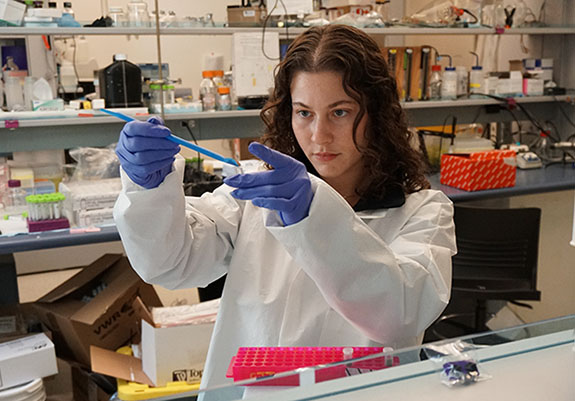Microbes in Soil Can Signal Diamond-Bearing Kimberlite Far Below the Surface
Researchers at the University of British Columbia (UBC) have demonstrated how "biological fingerprints" in the soil can signal the presence of diamond-bearing kimberlite ore tens of meters below the surface.
The DNA sequencing of microbes represents a new tool for mineral exploration — a tool that's much less invasive than drilling for samples.
"Drilling is costly, it's time-consuming, and so you want to really know [what's there] before you start poking holes in the ground," Bianca Iulianella Phillips, a doctoral candidate at UBC’s department of earth, ocean and atmospheric sciences (EOAS) told CTV News.
Currently, prospectors employ a limited number of tools to locate buried ore, including drilling samples, scanning terrain and analyzing elements in the overlying rock.
“[The DNA] technique was born from a necessity to see through the Earth with greater sensitivity and resolution," said Iulianella Phillips, "and it has the potential to be used where other techniques aren’t working.”
According to the researchers, when ore interacts with soil, it alters the communities of microbes in the soil, layer by layer, right up to the surface. The researchers tested this in the lab, introducing kimberlite to soil microbes and monitored how they changed in number and species.
“We took those changed communities of microbes as indicators for the presence of ore materials, or biological fingerprints in the soil of buried mineral deposits,” said Iulianella Phillips.
Using these "indicator" microbes and their DNA sequences, the team tested the surface soil at an exploration site in the Northwest Territories where kimberlite had previously been confirmed through drilling. They found 59 of the 65 indicators were present in the soil, with 19 present in high numbers directly above the buried ore. They also identified new indicator microbes to add to their set.
What's more, they tested the surface soil at a second site in the Northwest Territories where they suspected kimberlite was present, and precisely outlined the location of kimberlite buried tens of meters beneath the surface.
This result verified that indicators from one site could predict the location of kimberlite at another.
In the future, exploration teams might use a database of indicator species to test an unknown site to find out if kimberlite deposits are buried beneath the soil.
The researchers also noted that similar DNA sequencing could be used to identify deposits of copper and other valuable materials.
“Microbes are better geochemists than us, and there are thousands of them,” said lead author Dr. Rachel Simister, who conducted the work as a postdoctoral researcher in the UBC department of microbiology and immunology (M&I). “You might run out of elements to sample, but you’ll never run out of microbes.”
The research was published recently in the journal Nature Communications Earth and Environment.
Credits: Photo of UBC doctoral student Bianca Iulianella Phillips by Alex Walls. Photo of sub-arctic tundra at a kimberlite site in the Northwest Territories by Bianca Iulianella Phillips. Photo of UBC researchers collecting soil samples at a Northwest Territories mine by Crowe Lab.









